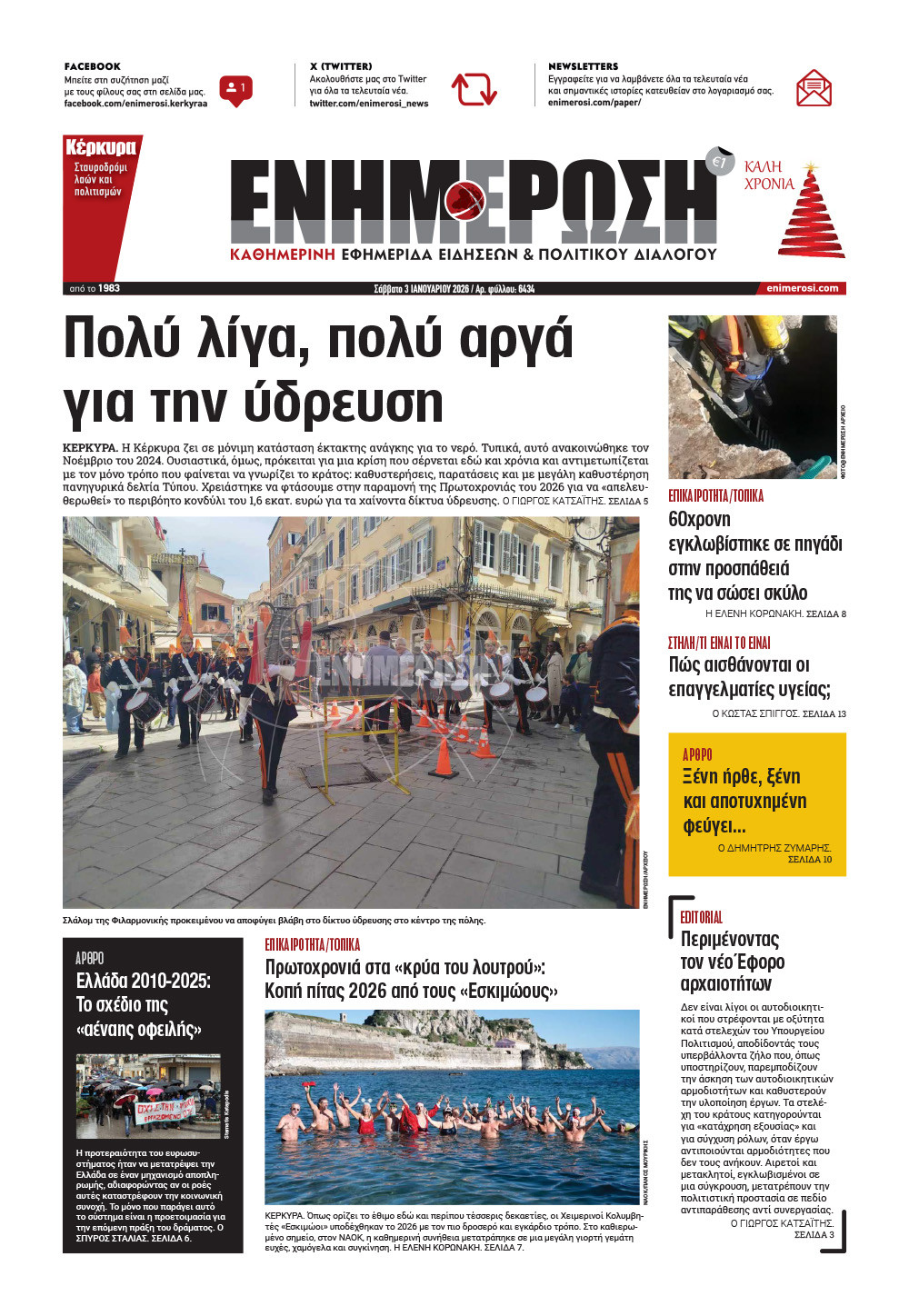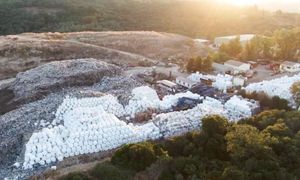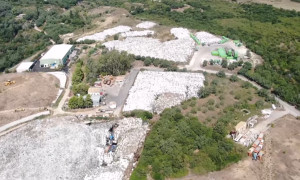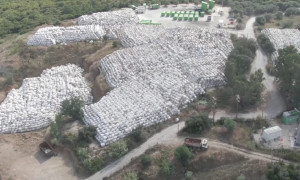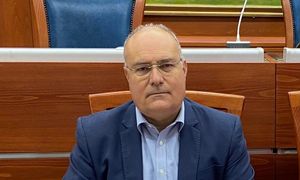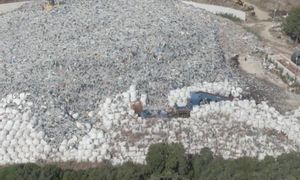Temploni Association’s reaction to Demokritos air pollution measurements
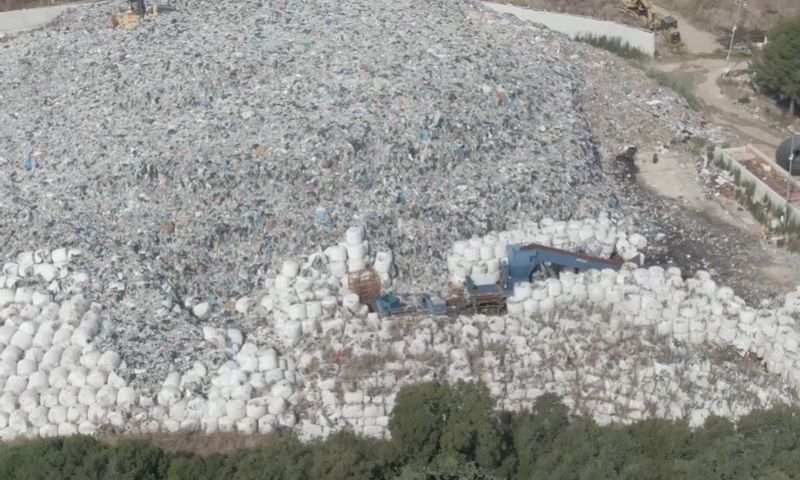
Temploni
25 Ιουλίου 2022
/ 18:47
CORFU. Demokritos’ recent announcement regarding the air pollution measurements in Temploni and the surrounding area provoked a reaction from the Temploni Association.
The Temploni Association expressed serious doubts about the data announced by the 'Demokritos' National Centre for Scientific Research through the Ionian Islands Environmental Department, which indicate low levels of toxic elements in the air.
The Temploni Association provided data from studies on landfills, saying that it is impossible that, with so many millions of m3 of biogas that have escaped over the years, there have been no harmful effects on the area’s atmosphere.
The Association’s comment regarding Demokritos’ announcements:
"From various sources we find the following: "The emission of gases (CH4, CO2, SO2, NH3, H2S, etc.) is another important problem that must be taken into account in the operation of a landfill, as it can have a serious impact on the atmosphere. In particular, the phenomenon of "methanogenesis", i.e. the creation and emission of biogas, occurs in landfills. Biogas is produced during the anaerobic degradation of the organic fraction of waste and its main components are methane (CH4) and carbon dioxide (CO2) in a 50/50 ratio by volume. In addition, there are cases where a landfill pollutes the atmosphere by releasing particulate matter, odours, smoke and dust.
Landfill gas components - composition (by volume):
Methane (CH4) 35-55%
Carbon dioxide (CO2) 30-44%
Nitrogen (N2) 5-25%
Oxygen (O2) 0-6%
Saturated water vapour
Therefore, 1 million tons of municipal solid waste produces 1.7-2.5 million m3 of methane. Landfill gas composition and production rates are mainly affected by the waste disposed of in landfill combined with atmospheric conditions. Municipal solid waste contains 150-250 kg of organic carbon per ton, which is converted by micro-organisms into landfill gas through anaerobic processes.
The formation of gas is affected by various factors such as the composition of the waste, the height and capacity of the landfill, air temperature, atmospheric pressure and rainfall. The production of landfill gas starts shortly after the waste is dumped in the landfill and can last from 15 to 25 years. The continuous decrease in the volume of landfill gas can be compensated for by dumping more waste during that period...”
So an ordinary person, who is not a scientist, can do the math and find out how many millions of m3 of biogas have escaped into Temploni’s atmosphere in the last thirty years. 60,000 tons per year for 30 years equals 1,800,000 tons of waste in Temploni and over 2,500,000 m3 of landfill gas in the atmosphere of the surrounding area.
It is impossible that, with so many millions of m3 of biogas that have escaped over the years, there have been no harmful effects on the area’s atmosphere. What is the point then of all the environmental impact studies of landfills? What is the reason for the existence of the Environmental Conditions Approval Decision (AEPO) which reduces the environmental conditions?
(It is also well known that no environmental commitment has ever been met)".
The Temploni Association provided data from studies on landfills, saying that it is impossible that, with so many millions of m3 of biogas that have escaped over the years, there have been no harmful effects on the area’s atmosphere.
The Association’s comment regarding Demokritos’ announcements:
"From various sources we find the following: "The emission of gases (CH4, CO2, SO2, NH3, H2S, etc.) is another important problem that must be taken into account in the operation of a landfill, as it can have a serious impact on the atmosphere. In particular, the phenomenon of "methanogenesis", i.e. the creation and emission of biogas, occurs in landfills. Biogas is produced during the anaerobic degradation of the organic fraction of waste and its main components are methane (CH4) and carbon dioxide (CO2) in a 50/50 ratio by volume. In addition, there are cases where a landfill pollutes the atmosphere by releasing particulate matter, odours, smoke and dust.
Landfill gas components - composition (by volume):
Methane (CH4) 35-55%
Carbon dioxide (CO2) 30-44%
Nitrogen (N2) 5-25%
Oxygen (O2) 0-6%
Saturated water vapour
Therefore, 1 million tons of municipal solid waste produces 1.7-2.5 million m3 of methane. Landfill gas composition and production rates are mainly affected by the waste disposed of in landfill combined with atmospheric conditions. Municipal solid waste contains 150-250 kg of organic carbon per ton, which is converted by micro-organisms into landfill gas through anaerobic processes.
The formation of gas is affected by various factors such as the composition of the waste, the height and capacity of the landfill, air temperature, atmospheric pressure and rainfall. The production of landfill gas starts shortly after the waste is dumped in the landfill and can last from 15 to 25 years. The continuous decrease in the volume of landfill gas can be compensated for by dumping more waste during that period...”
So an ordinary person, who is not a scientist, can do the math and find out how many millions of m3 of biogas have escaped into Temploni’s atmosphere in the last thirty years. 60,000 tons per year for 30 years equals 1,800,000 tons of waste in Temploni and over 2,500,000 m3 of landfill gas in the atmosphere of the surrounding area.
It is impossible that, with so many millions of m3 of biogas that have escaped over the years, there have been no harmful effects on the area’s atmosphere. What is the point then of all the environmental impact studies of landfills? What is the reason for the existence of the Environmental Conditions Approval Decision (AEPO) which reduces the environmental conditions?
(It is also well known that no environmental commitment has ever been met)".



